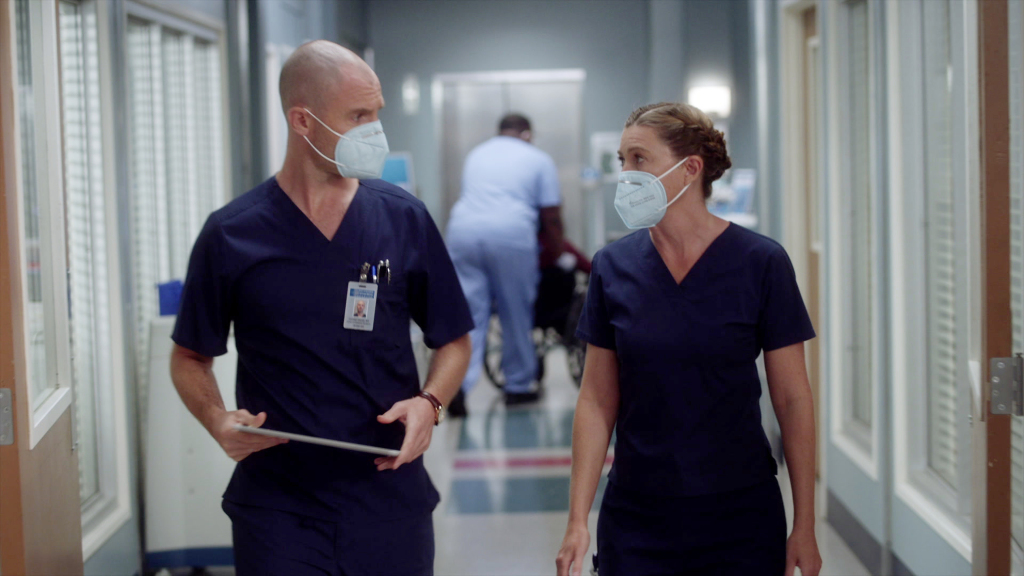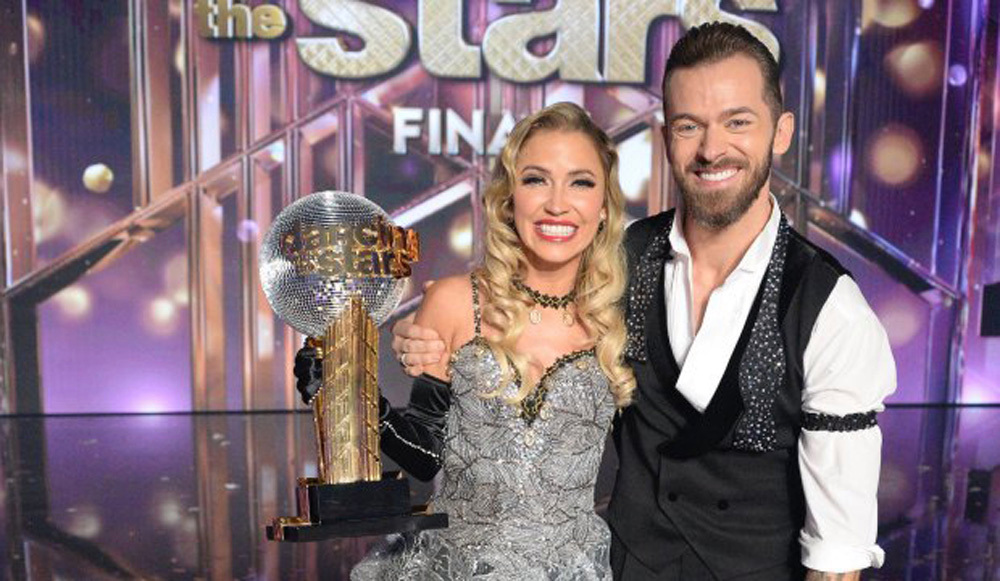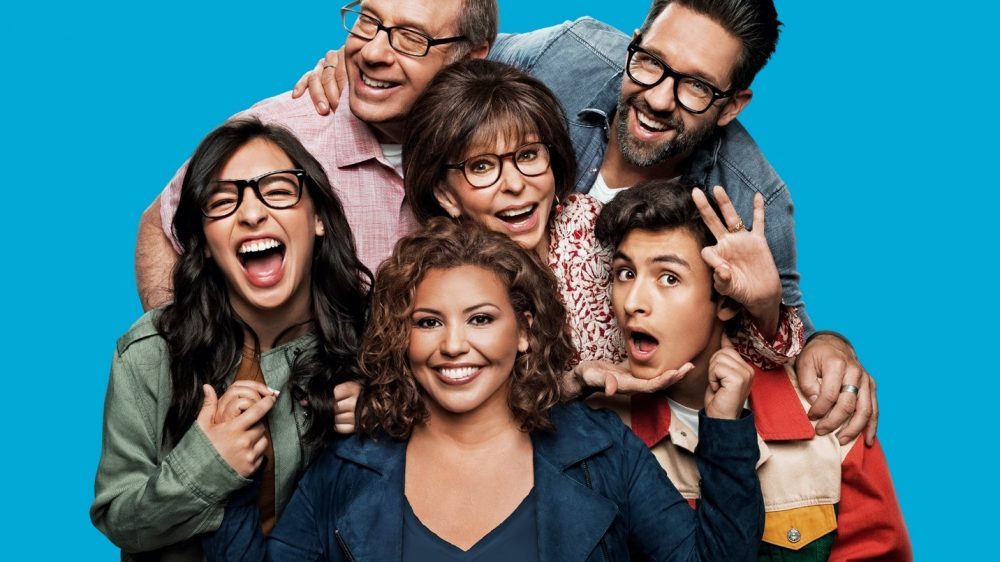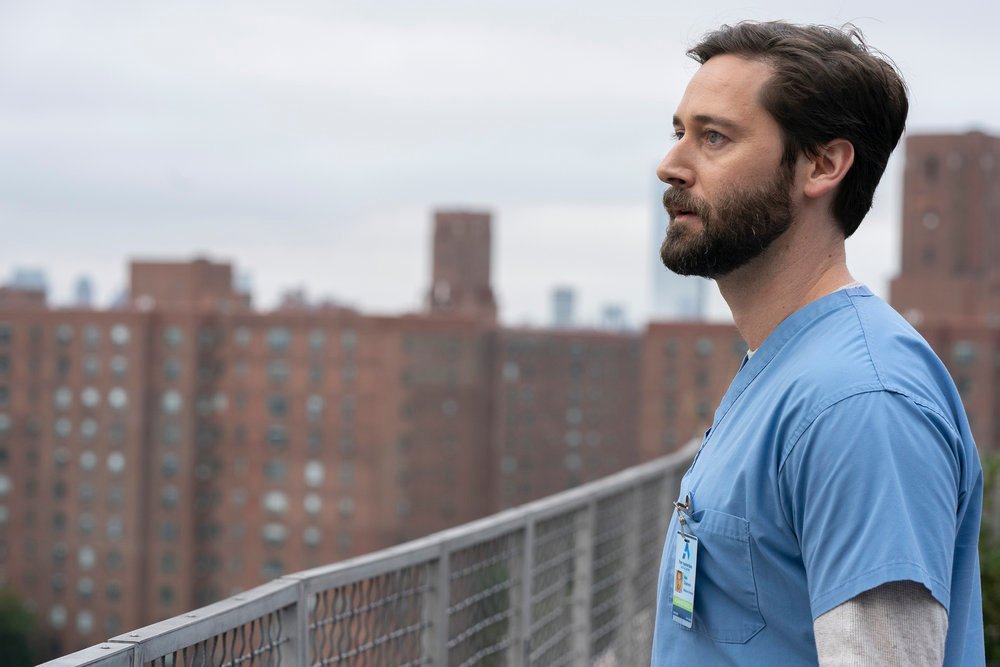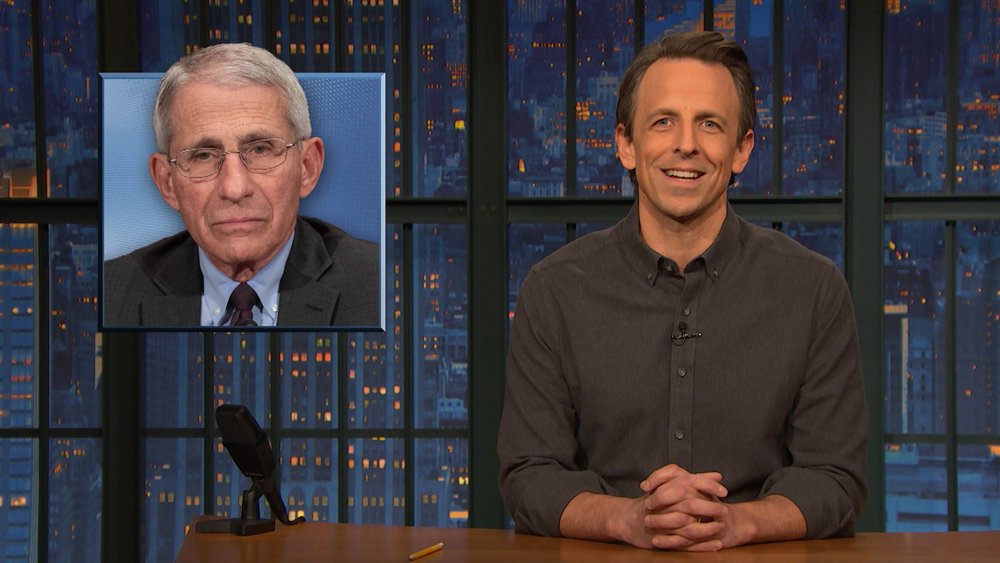On the evening of March 12, 2020, Grey’s Anatomy executive producers Krista Vernoff, Debbie Allen and James Williams sent out note to the series’ cast and crew, informing them that “Out of an abundance of caution, production is postponed effective immediately. We are going home now for at least two weeks and waiting to see how the coronavirus situation evolves.” Over the following 24 hours, virtually all Hollywood production shut down and stayed dark for months as the pandemic took hold and ravaged the world, until TV series started a return to filming in late summer-early fall with strict Covid protocols.
Exactly one year later, several top showrunners look back at the early days of the shutdown, reminisce how television production was able to come back and contemplate how the pandemic may have changed the business forever, some of it for the better.
Related Story
Broadway’s ‘Company’ One Year After Covid Shutdown: Stars Chronicle A 12-Month Pause In Being Alive
GREG BERLANTI
Berlanti Productions has 17 current series, including The Flight Attendant, The Flash, You and Prodigal Son
As long as I’ve worked in TV, I’ve marveled at the flexibility, ingenuity and creativity of everyone involved. However, I’ve never been more proud or amazed than by what I’ve witnessed these last twelve months. First came the mass shutdowns—the sets, the writers’ rooms, the post facilities. Then we had to assess what we had completed: what episodes were done or could be finished given the material we had shot. We were all told at the beginning that it would be a few weeks, maybe a month, but I don’t remember anyone I spoke to in the business really believing or thinking that. Once people were home safely, my first concern—knowing how many of our fellow coworkers in this industry live paycheck to paycheck—was making sure that those people had what they needed to financially survive a work stoppage. It’s one thing to be told to go home, but it’s another to sit there in a panic that you won’t have enough to survive an indefinite amount of time. To see what and how we could contribute, we began talking to the wonderful institutions that are the safety net of so many in our business, like the Actor’s Fund and the Motion Picture Television Fund. Our company established our own emergency fund as well. One of the many reasons I love our business was evidenced by the number of crew members that wrote to our office in need of funds, but wanted to make sure that anyone who was more in need got the money first.
Production stopped but the writing never did. After over half a century of TV writers’ rooms, writers created, on the fly, a whole new way (and in this writer’s bleary-eyed opinion, an even more exhausting one) of breaking stories virtually. Whatever time was not spent in a Zoom room trying to think up stories that could be entertaining, but also Covid production-friendly, was spent on another Zoom trying to figure out what Covid production-friendly meant. (Here, I’d like to give a special shoutout to the indefatigable Sue Palladino, Warner Bros. TV head of production, who I know spent endless hours working with both the unions and the line producers to try and determine what a Covid safe set would look like.) From the time the shows started up production again, up until this very moment, I’ve been blown away by how the showrunners, line producers, casts, and crews have adapted to these many changes and have persevered to make great episodes worthy of our dedicated audiences.
In the past twelve months, more has changed about our way of making TV than what hasn’t. Like many, I think the pandemic accelerated a lot of changes in our business that were already occurring (shorter seasons, less pilots, more year-round programming). I don’t think it’ll ever go back to exactly the way it was before. Small for instance: Showrunners, I imagine, will always have to offer a Zoom component to writers that want to live part of the year in a different city or just simply don’t want to come in five days a week. And that awkward small talk that used to happen at the beginning of an in-person TV pitch has been replaced by the awkward fifteen seconds at the end of a pitch where you race to close out your Zoom window. But more than anything, this past year has cemented what I already felt so deeply about a business that I’ve been lucky to be a part of for over two decades now: television is the most collaborative of filmed mediums. We sink or swim together. This year, in spite of arguably the greatest challenge to our business ever, we swam. We did so because as impressive as the stories are that we writers in Hollywood dream up, nothing is more impressive than the hearts, minds, and talent of all the folks that work so hard to realize these stories and to bring them to audiences around the world.
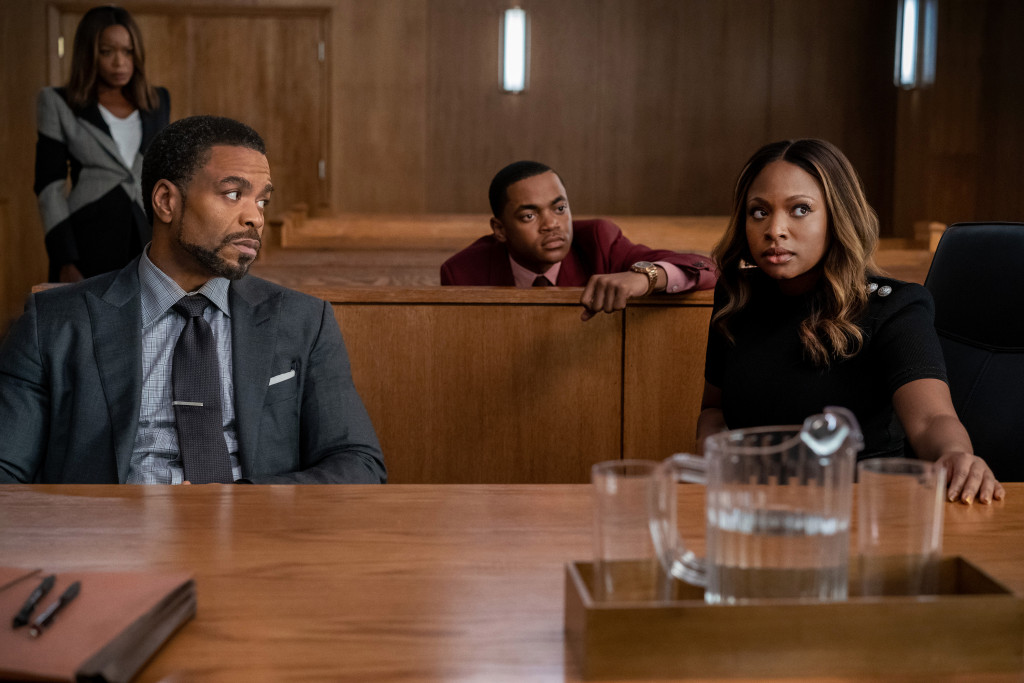
Starz
COURTNEY KEMP
Power Book II: Ghost showrunner and EP of the Power franchise on Starz
I thought it was going to be really, really bad. I could feel it in my bones. I was running around screaming “We have to shut down!” like Chicken Little, but this time, the sky was actually falling. I thought we’d be back at work in September or so, and we were, but even then, for me, it was too early. I was in New York, so I had a bit more of a preview of the devastation that was coming. In Los Angeles, people were way more relaxed that first week in March. I wore a mask back on the plane 3/13/20, and I remember people staring at me.
I think Hollywood now is kind of business as usual, which is that the show must go on, and people are shooting — including us, we have three shows going now in two states. It’s been a real tug of war between safety and the bottom line — how do we keep the crew safe? But how long can we delay going back, when people need to work? What is the point of risking human lives for capitalism? But how much healing and escape does television provide? For people who have been trapped in their homes for a year now, television provided sanity, humor, recreation– even a kind of freedom. A way to escape your four walls. We had to and have to keep going for the fans, but we need to protect ourselves and our crews while we do it.
With that, I think that it’ll be a long time before we go back to the culture of Hollywood lunch. Is anyone driving 30 minutes to sit in a restaurant at precisely 1 p.m. to leave at precisely 230 p.m. in order to be back at our desks by 3? The whole thing can be done over Zoom for free with no traffic. I pray that writers’ rooms eventually go back to normal, because we lose so much chemistry and fun being apart. Our productivity goes way down over Zoom. I know that studios may think that Zoom rooms will save on overhead, but the same amount of work took more weeks because of the stress and distraction of staring at screens all day.
KRISTA VERNOFF
Grey’s Anatomy, Station 19 and Rebel showrunner
On Grey’s Anatomy, we shut down before other shows, we also came back to production before a lot of other shows, thanks to truly the leadership of Debbie Allen. There was some leadership from me, but for sure, it was guided by Debbie Allen going, if we don’t come back, we’re never going to come back, come on, Krista, we’re coming back. Set a date, set a date, set a date, where’s the scripts? Let’s go, let’s go, let’s go. She kept saying, if you put a date on the calendar, we’re going to work toward it, and we’re going to figure out how to do it safely. And we really did figure out how to do it safely.
I try not to predict, and I don’t know that back to normal is the healthiest thing that can happen for this town. I think that one of the ironic gifts of this return is that we’re working shorter hours, and actually have a more humane workday. So, I’m hopeful that we’ll find some happy medium between the rigorous Covid protocols, and the way it was before. That said, what I feel, primarily, is awestruck. That we managed to come back when we did. That we’ve managed to keep our crews and our cast safe.
It is indescribable how difficult and complicated it’s been to work within the parameters, and while I do think it has changed the show creatively to some degree, I’m in awe of what we’ve managed to do. What the writers, the editors, the actors, the directors, and the cast, and really, truly the crew have managed to do. If you came and you spent even a day in all of that protective gear with all of the protective measures in place, it’s unbelievably exhausting, and I’m just blown away by the artists who I get to work with. Just amazed by what we’ve done.
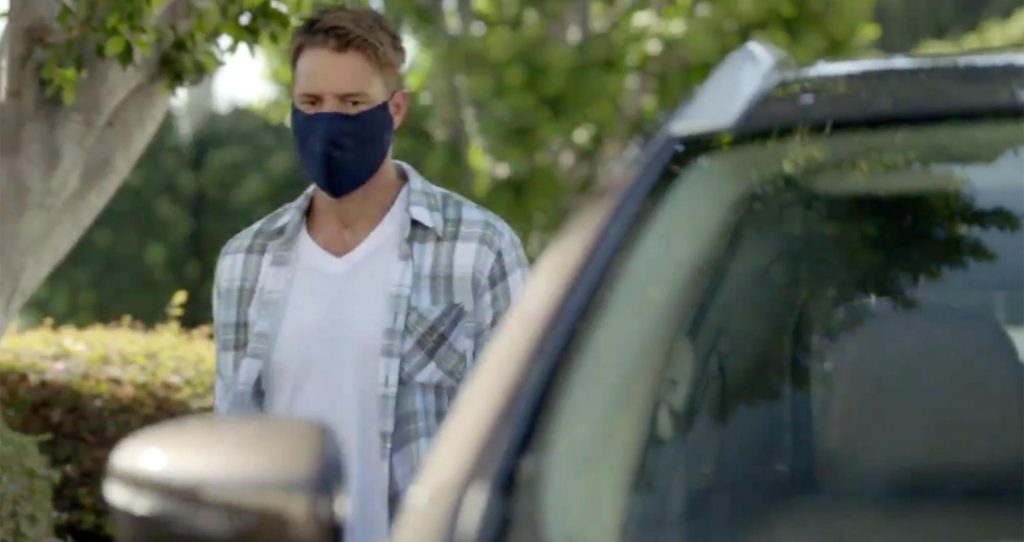
NBC
DAN FOGELMAN
This Is Us co-showrunner, Only Murders In the Building showrunner
We had a wrap party for Season 4 in February of last year. I was following more closely what was going on overseas and I was going, this virus seems kind of scary and nuts, I wonder if it’s a really good time for us to be gathering 300 people with alcohol in a room together? And everybody’s no, it’s fine. I remember going to the wrap party and thank God nobody was ill and nobody got sick from it. But I remember people drinking too much and dipping their hands in bowls of hummus. I was just like, oh, God. And for like a month I laid in bed staring at the ceiling, as things got worse and worse.
When you’re a showrunner right now during this period, it’s been a pretty stressful eight months. I think a lot of us have become — many people but particularly people that are in charge of large groups of people — we’ve become kind of amateur epidemiologists at this point. I’m talking to doctors all the time. I’m well read up on stuff all the time. Primarily, because my main focus of the past six months has been keeping — I have two shows going — so keeping the 600 people that I have working on my shows safe and feeling safe in a world that has never dealt with this before.
I miss the collaboration of people. I have not been on set very much. In order to get onto our set you have to test multiple times a week in different locations. And the demands of editing and running a writers room, it’s just really, really hard because I’m not in the office where the sets are, it’s hard to get down there. I miss being in rooms with writers as opposed to doing Zooms, which I’ve grown to hate, even though I’ve been very proud of the TV we’ve made over them this year. But I do not want to have to do it again.
Running a room with 15 boxes on it every day, multiple hours a day, really takes a toll. As does every morning or every other morning, I am getting at 4 o’clock in the morning reports on tests of hundreds of people that until recently has really kept my stomach in knots. I will be very relieved when writers rooms and showrunning regain a sense of normalcy. Because people have had far harder years, but in terms of the job it’s definitely been challenging to keep a television show running.
ANDREW LLINARES
Dancing With the Stars showrunner and executive producer
Dancing With the Stars was always going to be a tough show to produce during a pandemic – it literally requires celebrity contestants to dance in close quarters spurred on by a live audience.
However, Llinares, showrunner and exec producer of the show, which is produced by BBC Studios’ Los Angeles production arm for ABC, tells Deadline that he believes the changes put in place due to Covid actually improved the show and will look to keep a number of measures that were introduced. “Making a live show on the scale of Dancing with the Stars in the midst of a pandemic was a massive challenge. As soon as we understood the gravity of the situation with Covid, we worked really hard to make a version of the show that we could all be proud of, while keeping our cast and crew safe. In all our conversations, safety always came first,” he said.
The series aired between September and November, coming as Los Angeles, which had initially done relatively well to keep Covid numbers low, was on the verge of a spike. The show, which was also debuting a new host in Tyra Banks, went forward without an audience, leading them to redesign the set with screens, reduced the amount of set pieces and had no backing dancers for most of the season. Llinares said that this put the focus back on the couples, including eventual winners Kaitlyn Bristowe and Artem Chigvintsev, with remote cameras introduced in rehearsal spaces to allow them to capture more intimate footage.
“The whole Covid situation forced us to look at the show in a completely different way and pushed us to go to places creatively we wouldn’t have gone otherwise. What was interesting was that many of the creative solutions that we came up with actually ended up improving the show,” he added.
Llinares said he anticipates they will keep many of the changes they made, regardless of whether restrictions stay in place or not. “Ultimately, we are all looking forward to a time when we have the freedom to make shows without these sort of restrictions, but even when that day comes, we’ll still hold on to many of the lessons that we learned from this very unique time.”
GLORIA CALDERON KELLETT
One Day At a Time co-showrunner
I was reading a lot about what was happening around the world so I thought it would be 12-18 months and that’s what it’s turned out to be, so none of this is super surprising given what scientists were saying early on.
In that vein, the biggest challenge I faced was keeping myself and my family safe. But there was also incredible beauty in appreciating health and I didn’t get sick once this year which is huge. I’m a hugger. Not that I’m gonna stop hugging people but it certainly gives me pause. Having said that, I think as soon as everyone is vaccinated it will quickly go back to normal and we will all try to forget about this.
What has changed things is Zoom pitches! There was a world where I used to have to get dressed, drive an hour, do a one-hour meeting to drive an hour home. Now, people can pitch via Zoom, meetings can happen via Zoom, coffees can happen via Zoom, writers’ rooms can happen via Zoom. I miss the interaction of being in person every day, but I think we have adapted. I think working remotely has a lot of pluses and I think that can continue.
DAVID SCHULNER
New Amsterdam showrunner
You know the saying “brought me to my knees”? The image of the heroine/hero sinking to the floor, usually in slow motion, after receiving devastating news? I would never write such a stage direction, for fear of being mocked by my fellow writers. Well, guess what? This past year has literally “brought me to my knees” and I have in fact gone from a standing position to find myself on the floor of my kitchen, phone to my ear, after receiving devastating news. The news was that an actor, director, writer, assistant director had all been diagnosed with Covid on my show, New Amsterdam, that was filming in New York at the beginning of the pandemic.
Seven months later New Amsterdam began filming again. The only way I could justify this was to make safety the absolute priority and to make it count. To take all our helplessness, our sorrow, our anger (so much) and our hope (so little) and put it in the show. If the actors and crew were going to take this risk to make a television show, I was going to make sure it was a show they could be proud of. A show worth putting their lives on the line for.
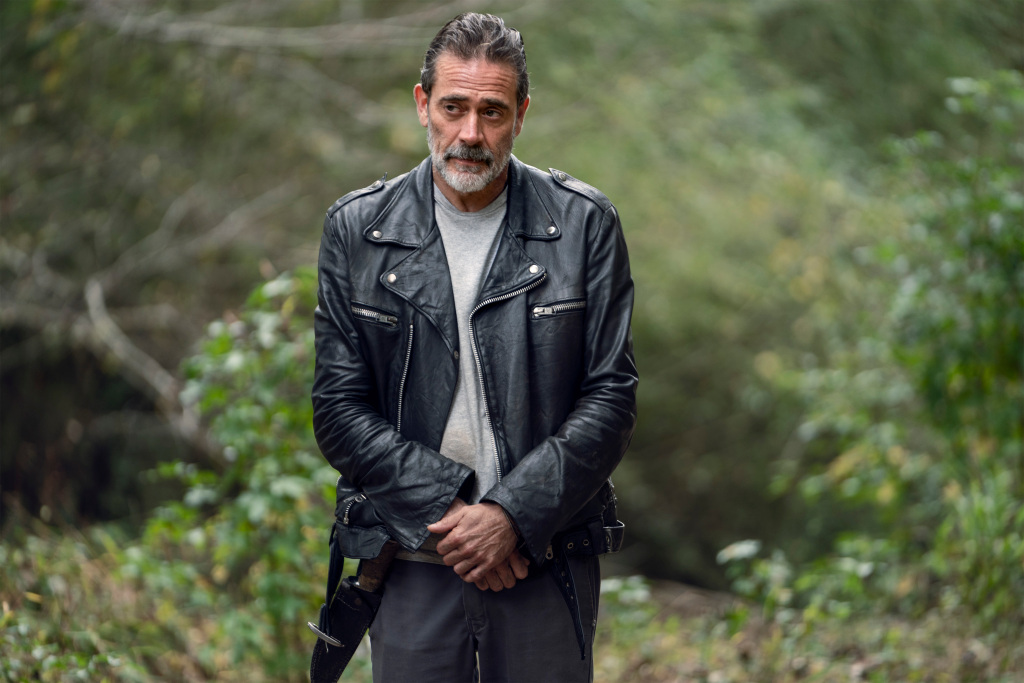
Eli Ade/AMC
ANGELA KANG
The Walking Dead showrunner
We were in very early pre-production on Season 11 and final post-production on Season 10 when my writers and I started hearing rumors that various shows were about to pull the plug on production temporarily. I moved my writers’ room to remote work a few days before the town shut down and the rumor around AMC was that we were going to shut down production for four weeks right off the bat. But other studios announced first that they were doing a two-week shutdown so our initial shutdown turned into two weeks as well.
In the writers’ room, we were guessing it would be closer to 8-12 weeks on the low end, but that by summer, things might approach a new normal. At the time, we were mostly assuming we’d get some extra time to get ahead on scripts and then we’d be right back into prepping our Season 11 premiere. We actually kept multiple people working on the production side for weeks to try to get ahead on set designs and construction logistics, etc. But within that two-week suspension, the reach of the virus started to quickly become more clear. I started to wonder if we’d have to scrap a months worth of work, or if our episode order would be cut, or if our cast and crew would be out of work indefinitely, or on the flip side, if people would be rushed back into production prematurely.
These were questions that were being asked in writers’ rooms and on message boards throughout Hollywood as everyone was trying to get a grip on what was going to happen. I felt heavy dread most days throughout the spring of 2020 because I really didn’t know what to expect at the time and concerned employees were asking me questions no one could answer. But the reality wound up very different from any of our initial thoughts and fears back in March.
Now, my guess is that Hollywood may start to see some form of normalcy in 2022, though normalcy is a relative term. I hear predictions about workplaces going back to business as usual this fall and I just don’t see it right now. We’re currently filming and our production schedule stretches into 2022 with extended shoots because we have to be prepared for the fact that we may not reach herd immunity this year and scientists don’t yet know definitively what the impact of all the variants will be. I’m pretty sure productions will still be wearing masks for a while to come, and writers and post and execs will continue to be cautious about being indoors in groups in the short term.
I think writers’ rooms and pitches will eventually move back to mostly in-person work but I think there will be less tolerance for impossibly long writers’ room days going forward (a good thing!) because Zoom has forced people to practice a certain level of efficiency.
On the production side, I love 10-hour shoot days and hope they’ll stick — the crew is happier, more rested, gets more time with family, and that ultimately helps productivity and quality. On the studio/business side, I think fewer pilots and overall belt-tightening might stick, but I feel that’s more of a “Covid sped up something that was going to inevitably happen” kind of change. My guess is that a generation of gamers/YouTubers/creators armed with digital tools and tech since childhood is ultimately going to disrupt the industry more than Covid did in the long term. But that’s a whole other topic!
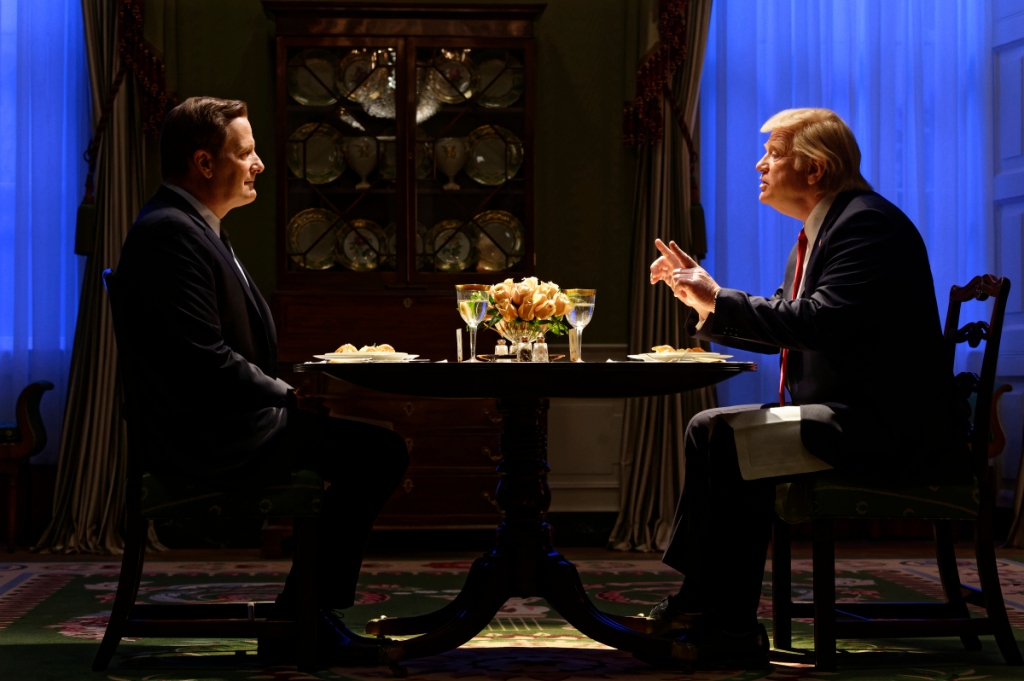
Showtime
BILLY RAY
The Comey Rule showrunner
On the night of March 11, 2020 – one day before Hollywood shut down – I had a lot on my mind.
I was less than a month into the cut of my limited series The Comey Rule and it was time to show it to some friends and find out if it was any good. Showtime gave me a screening room, I sent out the invites, and ordered a bunch of pizzas. (I wouldn’t be eating anything myself; screenings always leave me twisting with anxiety and dread. The fear of having colleagues hate my work is paralyzing.)
There were a few hints that afternoon that the universe was rumbling. Two writer-friends begged off from the screening because they were just too “freaked-out” (their words, not mine) to be in a crowded room. Seemed a little extreme to me, but I didn’t judge them for it. And I made sure to be a good host by having lots of hand-sanitizer in the lobby and screening room.
About 15 people showed up, the lights went down, and Episode One of my series began. By the time it ended, an hour and 43 minutes later, the entire world had changed. We emerged from the screening room to learn two things. 1) Tom Hanks had Covid. 2) All flights from Europe to the U.S. had been canceled.
Both items felt ominous and impossible. We felt like Burgess Meredith in the Twilight Zone episode, where he steps out of a bank vault to find the whole world flattened by a nuclear war. Everybody rushed to their phones to check in with family. One friend was frantically trying to get her daughter home from a semester abroad in Ireland. It was a mess.
Because these people were friends, and filmmakers, they hung in and gave me hugely helpful notes on what they’d just seen. And knowing that they’d liked it calmed me enough to eat four pieces of pizza. Then, incredibly, we went back into the screening room and watched Episode Two.
When it ended, more conversation followed, but I now see that for all of us it was an attempt to have one last moment of “normal” before descending into what was going to be a very uncertain time. We all felt lucky to be talking about a movie—none of us knew when we’d get to do that again.
My family and I went into lockdown the next day. I edited the series remotely, scored it remotely, fought over it remotely, and did press for it without ever leaving my desk. Every day that I did not awaken with a sore throat and a fever was a total shock to me. It still is.
Will Hollywood ever feel like it did before that night? Will movies? Hard to say. I know Hollywood will survive, and thrive. It always does. People need stories; they need to see their world reflected back to them on a screen, no matter the size. But I know I’ll be forever changed. And I know that the next time I am able to gather together with friends and colleagues to talk about a movie, it will be a moment of gratitude and awe.
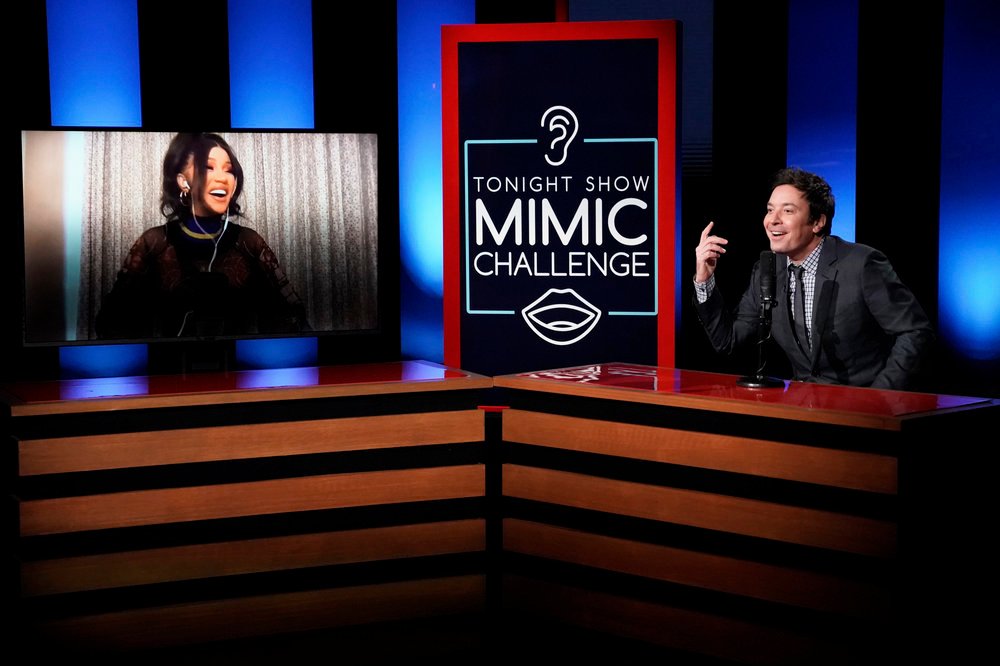
Andrew Lipovsky/NBC
JAMIE GRENET-BEDERMAN
The Tonight Show showrunner
The Tonight Show Starring Jimmy Fallon was the first late-night show back to the studio in July after four months of shooting from home. The former SNL star opened with a song “It’s Beginning to Look a Bit Like Normal”—an optimistic take on the pandemic and a far cry from the early days of the virus when Fallon’s kids became YouTube stars and his wife Nancy Juvonen was directing via iPhone.
The Tonight Show’s last “regular” episode was March 12 before returning remotely on March 23 and going back to the studio on July 13.
Jamie Grent-Bederman, who took over as showrunner of the NBC show from Gavin Purcell midway through the pandemic, said those at home shows ended up being some of the “most special” she’s worked on and she’s been with Fallon since his days hosting Late Night.
“Last March, the uncertainty of the state of the world was a big emotional and psychological challenge. We at The Tonight Show took it one day at a time. It was super important to Jimmy to get a show on the air as soon as we could to give some joy and entertainment to our viewers during a very unpredictable time, in addition to raising money for charities,” she said.
There was a lot of pressure on all of the late-night hosts to entertain during the initial months of the crisis—Fallon has equated it with the way that Saturday Night Live took on that mantle following 9/11 and they did.
Some of the challenges faced, by The Tonight Show and across the board in late-night, include doing a show without an audience, or at least with a very minimal number of staff sitting in, and interviewing guests via wonky Zoom hookups and being unable to do to many major set pieces. They’ve still managed to make viral moments, most recently with a WandaVision send-up, and a handful of Covid-swabbed guests in the studio.
Grent-Bederman said she’s looking forward to the days when things can get back to some sense of normality—particularly as the show is seeing some positive ratings growth over the last few weeks.
“Although late-night is at its best when different groups of people come together to make a show that goes on TV that same evening, we have found a successful way to produce the show remotely,” she added. “Jimmy and the entire staff here are so talented so we have been able to create amazing TV, but we are definitely excited for the day, which is hopefully soon, when we can all be in the same room and not have to rely on Zoom.”
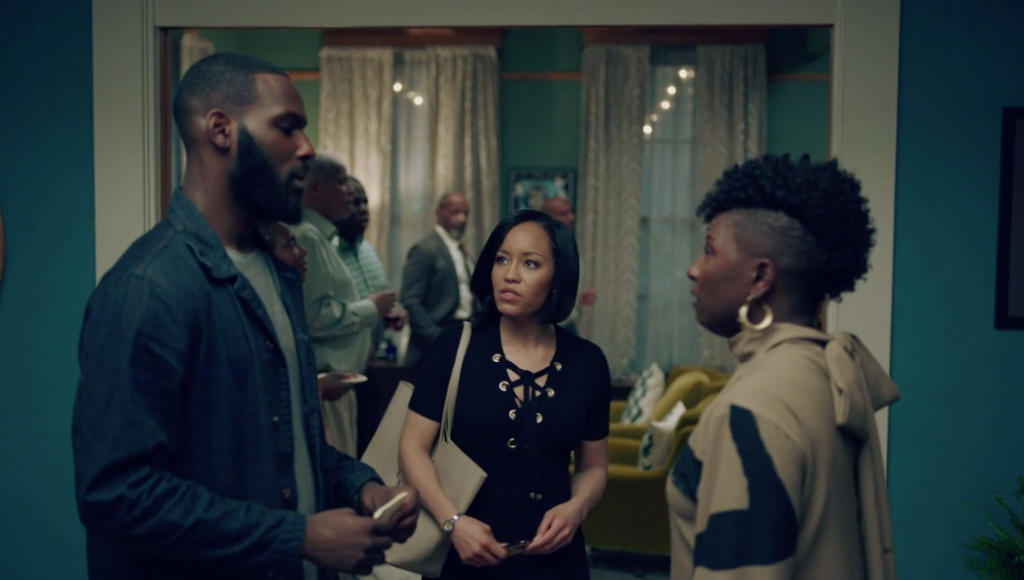
OWN
PAUL GARNES
Queen Sugar executive producer, Array Filmworks’ Head of Physical Production
Queen Sugar was in its fifth season, and we were just one week into shooting when we started to process what was going on around the country. And yes, we shut down on Friday the 13th, as ominous as that sounds. Even though the initial thought was a two-week stop, deep down, we knew this was going to be much, much bigger. With that said, we literally put the equipment down, turned off the lights, and sent everyone home. If you walked on the set the next day, you would have wondered, “Where did everyone go?” It was crazy.
Since then, challenges have changed over the last year. Initially, it was—how in the world are we going to get back to work? How do you create a safe space for actors to be on set without masks and not catch Covid? So before the industry finished negotiating the return-to-work philosophy that we use now, we worked with Warner Bros to create a plan that allowed us to have the show back up and running in September. Then we transitioned from how do we get back to work to how do we stay at work. For us, it was a hybrid solution of what’s turned into industry-wide testing and creatively shooting the season in chunks that included smaller groups of actors so that if we had any positive test results, we could continue filming without a long shutdown.
It’s hard to believe it’s a year later, and we are still working through ideas to film safely during Covid. Even though many have relaxed a lot of the protocols, film production still remains vigilant.
We focused a lot on the challenges that came out of Covid, but some of the things we’ve changed might ultimately be for the good and long-lasting.
Covid has forced productions to go paperless. Before the pandemic, the film industry’s dependence on printed materials was massive, and literally, overnight, we’ve gone to an almost 100% digital footprint. Second, we have found that the writers’ room and post-production have really shown to adapt well to working remotely, thanks to technology advances and computerized editorial systems. Although I can’t imagine that post will stay fully remote, the efficiencies in time will be hard to abandon. Also, what if we’ve gone from the idea of 12-plus-hour working days to working many days at just 10.5 hours. I really do hope that this is something we can continue to do.
MIKE SHOEMAKER
Late Night with Seth Meyers showrunner and executive producer
On March 11, Seth Meyers joked to Nick Offerman that if a pandemic hit they would put their differences aside as the Devs and Parks and Recreation star was a guest on Late Night‘s last show before the NBC late-night show left the studio due to Covid.
Starting back up remotely March 30, Meyers leaned into the studio wilderness with only a fictional sea captain and a copy of The Thorn Birds for company in his attic.
“All the trappings we’ve built up around these shows can be stripped away. No studio, no band, no audience laughs, no suit, no tie. All those things grew over the decades, but the only thing that matters is the host connecting with the viewer at home,” said Shoemaker, the EP and showrunner.
Meyers continued to interview guests over Zoom, his colleague Amber Ruffin and others guested on screen and his “A Closer Look” segments started to find real form before the former SNL man returned to the studio in September, where he has since had a number of studio guests including his new writer and pal John Mulaney talking about ghosts.
Meyers has told Deadline that there were some positives to the pandemic for him including wrapping at home around 4:30 p.m. so he could see his kids more, and Late Night also had the benefit of using The Tonight Show as a guinea pig and test case for its return to 30 Rock.
“I thought I knew how these shows worked but when I watched Seth switch his rhythm and morph from pausing for audience reaction to barreling through without stopping, I realized everything could change and it would still work. And maybe even thrive. Our shows this past year are some of my favorites ever,” Shoemaker said.



